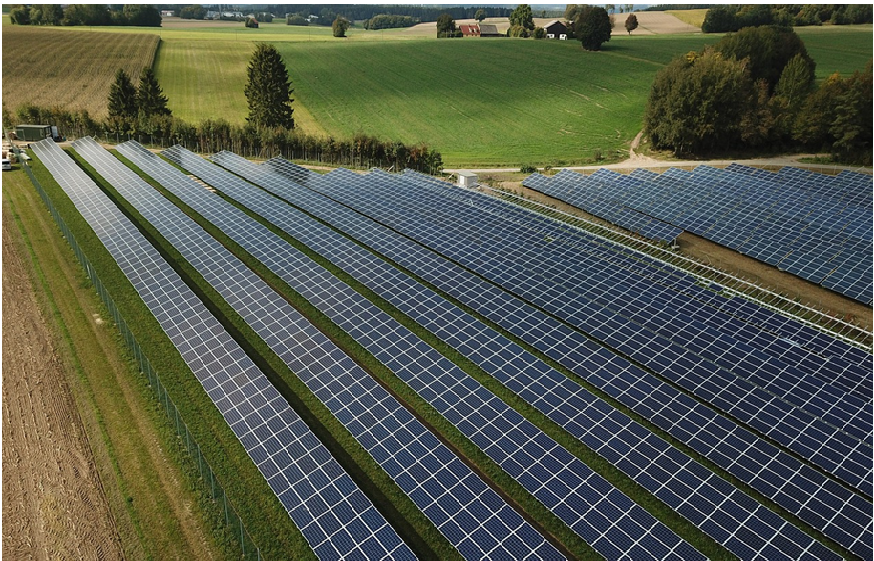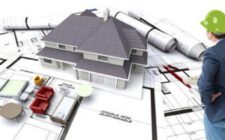Most people only think about sunlight when they purchase and install PV module mounting structure. They forget about heavy rains, snow loads, earthquakes and fall storms. These are the extreme stresses that a PV system must withstand for more than 25 years.
Why Choose the Best Solar Mounting Structure?
Although it typically only accounts for 20% of the total cost of the solution, the installation of solar mounting structure is an important step because if the mountings fail, the whole system will be destroyed.
The solar mounting structure connects the solar panel to the existing roof, carport, or ground. This is an essential part of any solar system. The system is designed to last at least 25 years and will be exposed to severe environmental stresses such as hail, wind, and heat waves. The simple act of choosing the lowest-cost providers could lead to financial losses throughout the project’s life. Nearsighted people often find it harder to see distance objects and road signs. This condition can be corrected by the use of corrective lenses. However, those who are looking to install a solar mounting structure might not realize they have investment myopia. This prevents them from seeing past the initial installation cost.
While it may be possible to reach your short-term financial goals by purchasing the cheapest mounting structure, this can lead to financial losses later on. Power yields can vary greatly depending on which type of mounting structure is used. It is best to choose quality over quantity. Mountings that have been well designed can increase power generation in residential and commercial spaces and require less maintenance. This is why module designers should prioritize quality over quantity. It will result in less modules on your rooftop. While this may be more costly in the beginning, the long-term return on investment is better than you expected.
Types of Solar mounting structure and the required features of each type
Every Solar system requires a different mounting and racking structure. Solar systems are different in size, dimensions and specifications depending on the location they are installed. To best fit the requirements of each location, manufacturers offer a variety of configurations. Every type of solar mounting system has its own advantages and disadvantages, which allows a skilled designer to make the best decision for each individual PV system.
· Mountings for Carport Solar Systems
A great way to use parking spaces for cars, private or commercial, is as an energy supplier. This is especially important as we witness the rise in e-mobility. Good carport systems that are modularly installed offer effective ways to make the most of your dead space, whether you have a single parking spot or an entire car park.
These criteria should be taken into consideration:
- Modular type and design
- Plant size;
- Conditions of the soil
· Distances between the supports/apportionment of the parking area
Solar mounting structure for carports should maximize space utilization, be quick to construct, have better quality, and be easy to install. Because of the risk to people and vehicles in the event that heavy rain or wind hits, it is important to ensure structural integrity when choosing solar mountings for carports. The foundation work quality is crucial.
· Mountings for Rooftop Solar Systems
There are many types of roofs available for industrial, commercial, and domestic buildings around the globe. Solar mountings for roofs should be easy to use and suitable for all types of roofs. Installation of a solar system can be complicated due to different roof shapes. Manufacturers need to consider a variety of solar module types, from mono crystalline and framed polycrystalline modules to framesless glass-glass modules. Mounting solutions must be strong, durable and able to support a large load. They also need to be easy-to-install. Mounting systems shouldn’t be used to perforate roof structures as this increases the risk of water damage. To ensure that clients are able to keep their roof warranties, they will need to be able to handle wind loading and conduct structural roof studies. Mounting structure companies must provide a structural certificate and all necessary guarantees for any roof system they install.
· Ground-Mount Solar Systems
This type of mounting structure should be designed for large-scale solar power plants. It should be fast, reliable, and suitable for all ground conditions. To ensure that the solar mountings last for 25 years, they must be able to withstand all weather conditions. To ensure the correct foundation selection, geo-technical studies must be done. The following tests should be done within this framework:
- Pull tests for inlined;
- Horizontal pressure tests
- The creation of soil profiles
- Analytical chemical analysis
It is important to improve the economic efficiency of ground-mounted solar panels. Concrete foundations are more expensive than piling-driven steel foundations. They can vary depending on whether you choose simple ramming, or more complicated digging and back-filling.
The structure must be flexible and resistant to wind forces. These are project types engagements, as each solution is unique based on the project requirements and location.
Mounting modules should be fast and simple. Modular arrangement can be done in either a landscape or portrait profile.
The Advantages of Selecting the Right Solar Mountings
High quality solar mounting systems take advantage of all environmental factors to maximize energy output and meet project owner’s energy consumption requirements. There are many benefits to choosing the best solar mountings:
· Solar System Efficiency
Galvanic corrosion can seriously affect the life expectancy of solar PV systems. Galvanic corrosion can lead to serious structural problems in mounting and racking components due to moisture and chlorides. The percentage of sunlight energy converted to electricity is called the solar panel efficiency. This will directly impact the type of mountings that you use to mount your solar modules. It is important to choose the right material for solar mounting structures. This will help lower the total cost of ownership over the 25-year project period.
· Average Production / Yield
Design of photovoltaic mounting structures is an integral part of the design principles for PV power plants. The amount of direct solar radiation that hits the panel or solar cell’s surface directly affects the conversion efficiency. Solar power absorption is affected by more than just atmospheric attenuations. It also depends on the earth’s distance to the sun and its tilt angle relative to the sun.
· The System’s durability
It is important to assess the durability of solar mountings as they are likely to be exposed to harsh environmental conditions. The following questions must be asked when choosing the right solar mountings:
- It will it be near the coast’s corrosive water?
- Can it withstand the extreme heat of desert conditions?
- Is it able to withstand the wind load from that specific location?
Even though the environment is not too harsh, it is important to maintain the system’s durability over time due to the stresses placed on it.
Installation and maintenance are simple
To reduce costs and time, a good mounting system should be modular. Pre-assembled mounting structures reduce the chance of injuries to installers working on roofs or carports. They spend less time installing and require fewer tools. This reduces their risk of injury or liability.




